#genshin lore
Text
Genshin SAGAU except Reader is a lore fanatic
cw: lore dump, archon quest spoilers, side quest spoilers, etc
“ guys did u know that the Sea Ganoderma is actually souls of children who died young trapped and is forced to spend generations absorbing elements from the sand and sea as the form of punishment?? ” “ what the fuck your grace. ” Tighnari muttered.
“yelan, i know where u got ur jacket. ” “ o- oh, really, Your Grace? ” Yelan stuttered, sweat dropping. “ Yeah, i know u stole it from a Fatui Harbinger that was supposed to be a gift for the Tsaritsa and made some 'adjustments' to make it fit your style. ” you stated with a smirk, while yelan tries to hold in her cries because you rlly are a Divine Being, knowing everything about Teyvat.
Archon quest spoilers down ahead
“ Guys, I have a theory that the upside down Statue of the Seven and city the Traveler and Paimon saw are actually the correct way and that proves it because when I took a walk at Spiral Abyss when I went down I expected it to be pitch black but instead I'm met with the galaxy sky and a moon and possibly, Khaenri 'ah and Enkanomiya are the ones that are actually in the surface, while Teyvat is underground and yknow what? Scaramouche is RIGHT. The stars are fake the sky is fake everything is fake as we know of HAHAHAHAHAHAHAHAHA ” your maniacal laughter echoed through the Akademiya as many Researchers are baffled by this amount of information
“ Alhaitham, do you have a second? ” “ Of course, Your grace. What is it? ” “ Are you the Scarlet King ” “ ........ excuse me ”
“ WELL i noticed that the color of your eyes matches the Scarlet King's eyes, and your boots matches the color of the buildings of the Scarlet King's Civilization. A blue gem appeared when the Scarlet King sacrificed himself and it kinda looked like the gems at your back. And when you do your burst it looks REALLY similar to the Primal Constructs’ attacks, and the Primal Constructs are what's left of the Scarlet King's civilization. And at your chest it looks like it has the wings of an eagle, and your name literally means young eagle. What does this have to do with the Scarlet King? Well, at the Dunes I've ventured, I've seen murals and a figure with a bird head and it could possibly be the Scarlet King but it strangely reminded me of you!!! Plus, you know how to use the devices made by the Scarlet King, whereas the books and researchers at the Akademiya shows no information on how to properly use them. Pretty suspicious...... ”
and then theres alhaitham sweating his balls off on how the hell did you get that information.
“ guys, did you know that when Enkanomiya was plunged deep into the ocean, they created a fake sun called Helios to survive, right??? But actually, the nobles wanted more power. They wanted a puppet or ruler that they could easily control or manipulate. And WHO WOULD MAKE A GOOD CANDIDATE??? THAT'S RIGHT! A CHILD. AND THUS, BEGIN THE REIGN OF THE SUNCHILDREN. They were young and ignorant, obviously easy to be deceived and lied to. They were manipulated to commit heinous deeds. The first Sunchild was deceived to imprisoning his role model for life, aka isolated from everyone. The sunchildren were DESPISED by their own people, EVEN THE CARETAKERS ARENT ALLOWED TO SPEAK TO THEM. Knowing that the Sunchildren could realize that they were being manipulated, the nobles then introduced Rite of Solar Return. Now what the hell is a Rite of Solar Return??? Basically, when a Sunchild hits a certain age, they will be taken into the inner sanctum of Helios. The artificial Sun's high temperature could AND WOULD incinerate them alive!!!!! AND SOMEHOW, SOME HAVE SIMILARITIES WITH OUR CURRENT ARCHONS!!! Orupeusu had a talent for the lyre, aka the Anemo Archon. Risutaiosu made lifelike sculptures, like the Electro Archon. And Isumenasu would roam his country, AND EVEN HAD A SPEAR LIKE THE GEO ARCHON AT HIS GRAVE!!! HAHAHAHAHAHAHAHAHAHAHHAHAHA I AM A GENIUS ”
the fact that people would still listen to your rants about Teyvat but still be concerned about your mental health is hilarious
if you werent the Divine Being of All, they would've locked you up where no one can find you, you know
Dottore would like you tho
so that's good
#genshin impact#genshin impact x reader#genshin impact x you#genshin impact x gender neutral reader#genshin impact x male reader#genshin impact x female reader#yandere genshin#yandere genshin impact#yandere genshin x gender neutral reader#yandere genshin x female reader#yandere genshin x male reader#yandere genshin impact x gender neutral reader#yandere genshin impact x female reader#yandere genshin impact x male reader#yandere genshin cult au#genshin cult au#genshin sagau#sagau#genshin lore#genshin impact lore#genshin theories#genshin impact theory
6K notes
·
View notes
Text
i think the funniest thing about Genshin is how the storyline completely fucks you over.
the beginning is pretty straightforward, honestly: you and your sibling were traveling to this world and had a fight with a god that you lost. you crash landed and ended up in a coma. woke up, your sibling is missing, and you go off to talk to different god and try and find your sibling.
if you pay even mild attention to the storyline and fast-forward a couple adventures,
there's some primordial god fucking with you, none of the gods you've met are actually really gods technically, there's been like 5 different civilizational genocides in the past 500 years that nobody seems particularly concerned about, your sibling is and isn't your sibling and is also maybe evil? (unclear), the world may be in a time loop, NPCs die every other world quest, the key to all your questions is a nation that got completely smited and cursed 500 years ago, and your most helpful kind-of ally is the guy that shows up once a year, cryptically trauma dumps some lore, and then fucks off again.
welcome to genshin impact.
#genshin impact#genshin lore#genshin theory#i mean not named but#genshin aether#genshin lumine#genshin dainsleif#Khaenri'ah#istaroth#celestia#etc#dainsleif#aether#lumine#paimon#yeup.#gi
2K notes
·
View notes
Text

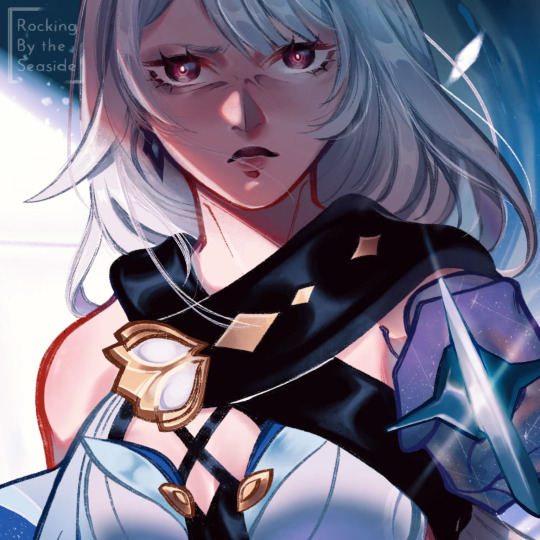
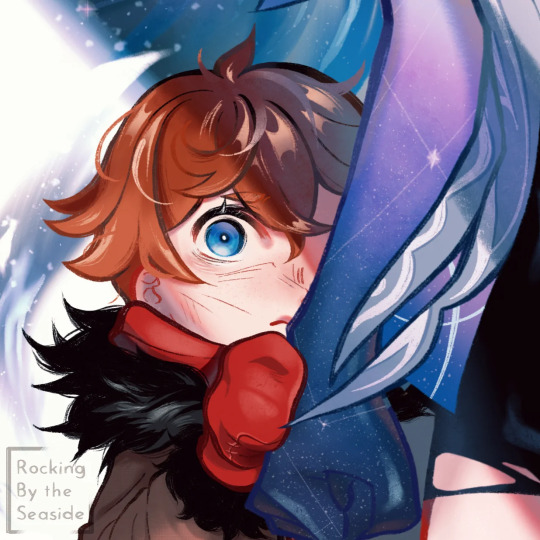
✦ Master and Young Apprentice.
Hope to see Skirk again in future story quests. But honestly, this is just an excuse to draw baby Tortellini.
#genshin impact#genshin fanart#childe#tartaglia#skirk#genshin skirk#baby tartaglia#childe tartaglia ajax#So proud of my shadowing here#genshin lore
251 notes
·
View notes
Text

-Capitano
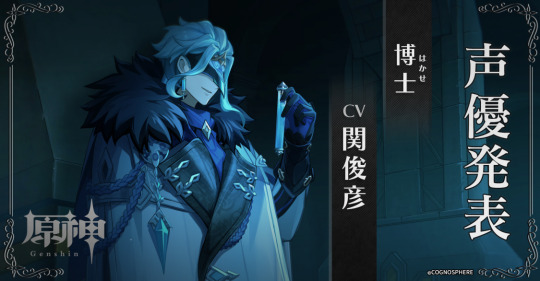
-Dottore

-Pierro
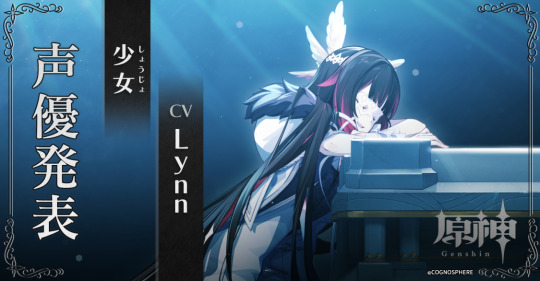
-Columbina

-Pulcinella
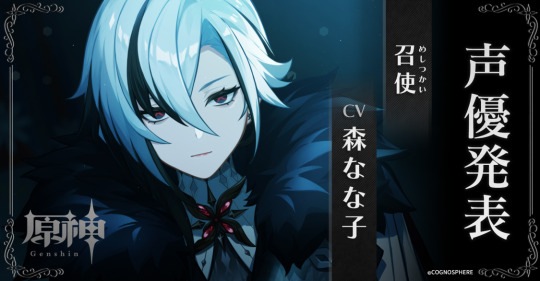
-Arlecchino
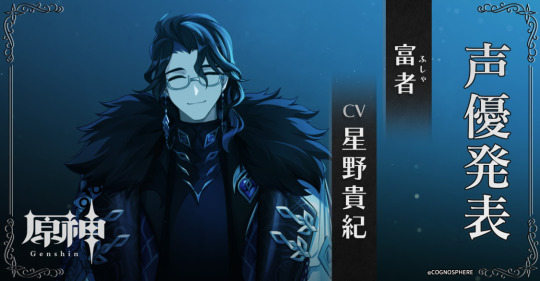
-Pantalone
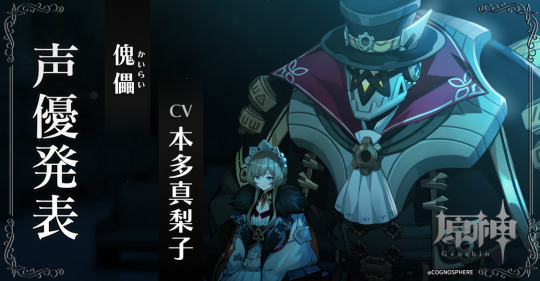
-Sandrone
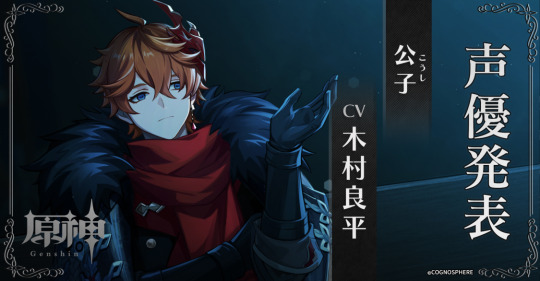
-Tartaglia
#genshin impact#genshin#genshin lore#la signora#genshin tartagalia#fatui harbingers#dottore#genshin theories#genshin fanfics#genshin fandom#原神#shneznaya#pantalone#sandrone#pulcinella#pierro#columbina#arlecchino#oh my they are so hot#Pantalone as dark baizhu#dottore is my fav yandere#Pierro is daddy#Capitano has that je ne sais quoi#i'm dyin here#this is a hell of an harbingers reveal#genshin x you
8K notes
·
View notes
Text
No, cause if you think about it, Kaeya never appears without purpose and intent. You might be like “duh that’s what every character is” but think about Childe, or Jean, Barbara, collei, the list goes on. They always appear with fun, happy reasons behind it, but not Kaeya.
He’s not the only character- Albedo shares this as well with how he mostly only appears to drop some lore bombs about khaenriah and gold and then disappears for another year, but it’s still different for Kaeya. He appears during events not only to give us lore, but always, without fail, to reveal something about himself.
Proof? Okay, the 1.4 windblume festival. Kaeya does a silly little poem class with Venti- surprise, he’s threatening him with a Khaenri’ahn message that says “I will triumph over you” and even when you debunk that, you can still see how Barbatos treats him as his own despite whatever stipulations about his heritage there are. 1.6 midsummer islands- Kaeya and diluc both reminisce their childhood, and it’s the first reveal that shows us just how close they really were. After that, he disappears for while, until boom- hidden strife in 2.8, where we find out the real details of his fight with diluc and how they grew apart- but it’s hinted they still care for each other. It also tells us a little about Kaeya’s lore and family, how they took over as regents, which adds to the real gravity of their fight- telling us he’s not just a poor kid from khaenriah, he’s the last real heir to the throne. After that, winelesefest, where it shows us how Kaeya and Diluc are right now, how theyre obviously missing each other and it’s very obvious that they care for each other deeply. That kinda ties up the whole ragbros story for now, and after that it becomes serious.
He appears again in the Caribert quest for us to find out he’s the heir of the organization of vengeful Khaenri’ahns turned monsters who want to take down the gods. He claims to not be affiliated with them in any way- but it leaves the question in everyone’s minds, “what else is he hiding from us?”
Now, he’s recently appeared once again for the 3.8 summer festival, and it looks really innocent and fun and just another way of showing us how kind he really is, until you realize that Kaeya’s outfit from this version describes how much he really hates the burden on his shoulders and how he wishes he was never forced to be an agent of khaenriah.
If you ask me, we’re past the point of just getting to know Kaeya and who he is on a personality basis, and are now getting into the real gravity of his identity as the last hope of the Khaenri’ahn kingdom. It’s really building up how important he’s going to be to the endgame of the whole archon quest storyline and how much of a key role he will actually play. Man I’m so hyped!!
#hahah what a rant#kaeya#kaeya and diluc#diluc and Kaeya#gi kaeya#genshin kaeya#genshin impact#ragbros#khaenri'ah#genshin lore
773 notes
·
View notes
Text
my roman empire is archons and their child whom they 'failed'. characters with doomed, dark fates, seeming as if they'd never been looked upon by their god. the ones you read about and wonder why their archon did not protect them or pay attention. venti and rozalyne, ei and kabukimono - quite literally, rukkhadevta or nahida and zandik. arguably, egeria and focalors, considering focalors bore the brunt of egeria's sin.
#shenhe was taken in by the adepti#so zhongli is in the clear#scara and dottore make me the saddest#zandik being treated as nothing but an outcast#instead of having his behavior corrected or understood#man is but a fool#genshin lore#raiden ei#scaramouche#wanderer#kabukimono#kunikuzushi#venti#la signora#furina#focalors#egeria#nahida#rukkhadevata#il dottore#zandik#🖋
168 notes
·
View notes
Text
Kabbalah in the Worldbuilding of Genshin Impact; Part 2: Descending to the Garden
Written by Sabre (@paimoff on twitter) and Schwan (@abyssalschwan on twitter)
This theory assumes you’ve completed the Fontaine Archon Quests, as well the Narzissenkreuz questlines. If you haven’t, you will be a) very confused and b) very spoiled.
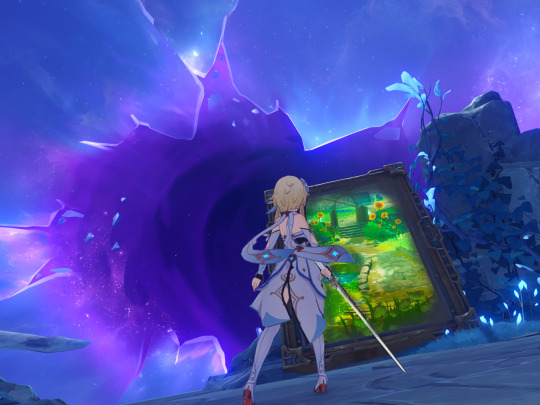
A Tale of Four Descenders
Four entered the pardes (orchard/garden)...one looked and died, one looked and went mad, one looked and cut down the saplings (apostatized), and one came in peace and left in peace [1].
This Jewish legend appears in multiple locations throughout the Talmud and its commentaries, and is associated with two pre-Kabbalah schools of Jewish mysticism known as Merkabah (chariot) and Hekhalot (palaces) mysticism. Both depicted visions of the throne of God (chariot) and the heavenly palaces, and provided instructions for how one might ascend to heaven to receive some kind of revelation or knowledge. The orchard/garden represents esoteric Torah (Jewish law) knowledge; this is why the euphemism for apostatizing is to “cut down the saplings.” (I know he says “blasphemy” (which is different), but this is reminiscent of what Dottore says at the end of Winter Night's Lazzo.)
The pardes legend first appears as a warning to scholars about the consequences of teaching about the “chariot” to disciples who are not ready. Though it's not mentioned in this specific text, this process of meditating to ascend to the palaces of God is referred to as “descending” in the writings of the Merkabah mystics [2].
In other words, this legend tells the story of four descenders.
In the conclusion of the Sumeru Archon Quests, Nahida tells the Traveler about the existence of the “Descenders." Based on the information she got from Dottore in exchange for her Gnosis, she shares that:
Descenders are “external beings, ones that don’t belong to this world”
There are at least four of them, and the Traveler is the fourth
According to the Fatui, the Traveler's twin is not a Descender
The Traveler is not recorded in Irminsul, but their twin is
Nahida speculates that the First Descender is the Heavenly Principles, but the identity of the second and third are unknown to her. At that point though, we still didn’t know what it was that Descenders do, or what the exact criteria for being one is, only that it couldn’t be as simple as just being from outside Teyvat.
The Fontaine World Quest series about the Narzissenkreuz Ordo fills in some pieces of the puzzle; specifically an additional criterion to be a Descender: they must be someone with a will “that can rival an entire world.”
In retrospect, Inversion of Genesis also hinted at the role of a Descender; The Traveler witnesses the results of someone attempting to change fate and/or the world and failing.
Nahida: Changing the world, changing the past, changing the fates of other people... These are not simple things to accomplish.
Nahida: What you were looking for is complete annihilation... But this is just a fantasy. Even if The Balladeer is removed from existence, the world will not heed your will. (Inversion of Genesis)
For most people, actually “changing the world” is impossible. But for a Descender, it might be different.
Will
...Though the results are nothing impressive, this is because the object they chose was pure elemental force, which lacks any will whatsoever. Like the difference between the Director (Lyris) and a Hydro Slime, perhaps?
...Actually thought of a possible breakthrough during the process... Even though the calculated result is unchanged, but if the refinement method is reflected... If the power of... then maybe we can extract the "will" within. Using this method... resist the impact… (Excerpts from Rene's Investigation Notes)
...The true source of the mysterious power unique to this place that the locals call Khvarena is unknown. But based on its ability to eliminate or reverse the influence of the Abyss (in fact, it is a type of annihilation reaction), the two powers are of the same level, that is to say, they are of the same order in terms of rules...
...In other words, both possess the power to "re-write the rules"...
...Regrettably, be it Abyss or Khvarena, all current users are stuck in an "unconscious" stage of being influenced and overwritten by their power… (Bizarre Transcript)
The Gavireh Lajavard region of the Sumeru desert introduced us to the writings of Rene, a precocious researcher with world-saving ambitions and not nearly enough adult supervision, as well as his only slightly Abyss-corrupted bestie Jakob. Like the Khaenri'ahns before him, Rene was searching for a power that had a “will,” believing it necessary to save Fontaine from an unspecified disaster that we would later learn is The ProphecyTM. During their time in the desert (which was right after the cataclysm), Rene determined that both Abyssal and Khvarena power have a will, but pure elemental energy did not.
Some time after their trip to Sumeru, Rene and Jakob would found the Narzissenkreuz Ordo, with the goal of finding a way to save Fontainians from being dissolved in the primordial sea-laced floodwaters. They would do this by dissolving all humans in Fontaine with primordial seawater in a controlled manner, melding everyone together into one Oceanid-like being to survive the apocalypse (think Human Instrumentality Project from Evangelion).
Rene had predicted the coming apocalypse with something he called his “world-formula,” and in addition to predicting the doom of Fontaine, it also informed him that “unlike the world depicted in these ancient texts, there will be no more new civilizations born.” The only way this could be changed would be by introducing a new “‘variable’ from outside the system” into the formula (Enigmatic Page 1). Rene’s goal was to become this variable, i.e., a Descender.
Four Worlds
The Tower of Ipsissimus comes from an old concept from the ancient Fontainian kingdom of Remuria, and was used to describe a powerful will that could rule, sustain, and destroy the world.
This tower was designed by the Narzissenkreuz Ordo, and it represents the evolution of the human soul and the infinite mysteries of the world.
The Narzissenkreuz Ordo believes that people continuously refine themselves through samsara cycles. These include Hyperborea, Natlantean, Remuria, and the first half of the fourth samsara (Khraun-Arya), which we are presently experiencing. Please take note that these are just names given to these eras by the Ordo based on ancient texts, and this evolution refers to spiritual evolution. There is no intent here to antagonize any research results obtained by the Akademiya. The human spirit undergoes the loss of paradise, the defeat of evil dragons, the original sin and baptism, and finally, freedom from the gods.
The term samsara is typically used to refer to the cyclic nature of reality, and can be used to describe concepts like reincarnation. It is not, however, referring to time loops. There is A Lot to unpack about this note, but for the purposes of this theory we will be focusing on the concept of these “four samsaras” and their relationship with the concept of a Descender, specifically that there seems to be the same number of samsaras as Descenders.
You may be wondering - this is Kabbalah world structure theory and we’ve yet to discuss Kabbalah. Well, it’s time now! But before we can get into specifics, we first need to review some terms discussed in Part 1 and then go through some basics of Lurianic Kabbalah.
Ah, the irony of calling anything about Lurianic Kabbalah “basics.” Caveat that what follows will be a simplification of concepts that are very difficult to grasp (I definitely don’t know what’s going on).
Creation of the World, Kabbalah Edition
Previously, we compared the “limitless light” emanated by God to create the world to the power of elemental energy, and compared the sefirot of the Tree of Life to the seven elements. The sefirot are components of this divine light (like light passing through a prism and refracting) and represent attributes of God that are used to create the world. The sefirot are traditionally depicted together in the form of a tree, which maps out their relationships with each other. For more details on the similarities between Kabbalah and Genshin worldbuilding, consult Part 1 (link) if you haven't read it yet.
Kabbalah focuses on describing the relationship between the infinite God and the finite universe and how it was created, with variations between different schools of thought. In this theory, we’ll be primarily focusing on the ideas of the Kabbalist Isaac Luria. The central idea of Luria’s philosophy was a concept he called Seder Hishtalshelut, or “Order of Evolution,” which refers to the cycles of “exile” and “redemption” (creation and destruction) the world is eternally experiencing. In the Lurianic system, time isn’t linear; the world was created in the past, but it’s also being created now.
The beginning of this Order of Evolution is referred to as the Tzimtzum, or Contraction. This refers to the contracting of the infinite God to make a space where reality could be created. Once this is created, a ray of divine light enters the void and begins to emanate reality. This is similar to the concept of the Pleroma in Gnosticism. The further the divine light gets from the source, the more it starts to break down into separate parts. More specifically, it breaks down into the Four Worlds, which represent stages of the evolution of reality, but also stages of the spiritual evolution of the human consciousness.
The Four Worlds are:
0. Adam Kadmon - Primordial (Original) Man
1. Atziluth - Emanation
2. Beriah - Creation
3. Yetzirah - Formation
4. Assiah - Action
Material reality is distinct from these four worlds; the ‘real’ world emanates out of the fourth world, Assiah. Each of these four worlds have their own sefirot structure, which in themselves contain additional sefirot, on and on, like a fractal. Luria called these recursive structures “tree systems” [3]. In Genshin terms, this is like how we have Irminsul, the world tree, but also the other smaller Irminsul trees in domains.

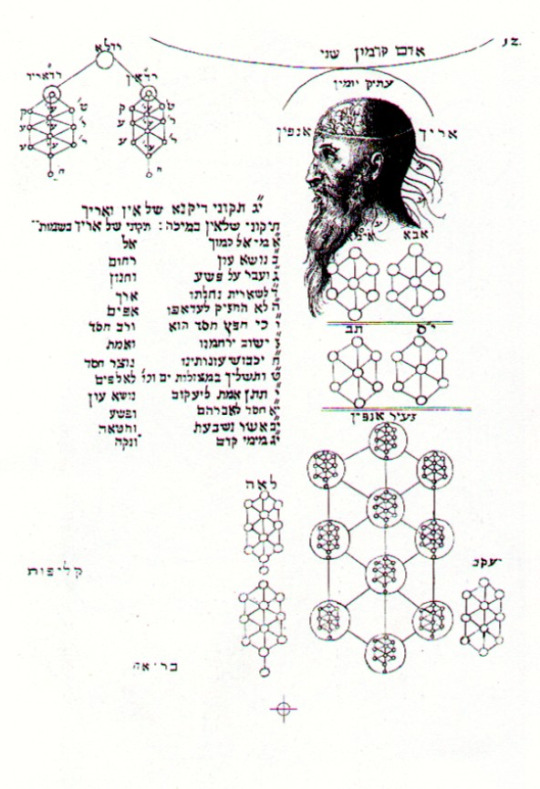
(Fun Fact: this schematic is sometimes called Jacob's ladder)
The system of the Four Worlds and their nuances are very interesting in themselves, but for the purpose of this theory, we’ll be focusing on the 0th world, Adam Kadmon, and the symbolism associated with this concept in both Kabbalah and general Jewish philosophy.
Primordial (Hu)Man
The concept of an ‘original man’ is discussed in Philo’s commentary of Genesis, where he describes this being as androgynous, connected to the concept of Logos, and the Idea/Form of humanity in contrast to the ‘earthly man.’ Philo’s definition of the Logos was something closer to the concept of a demiurge-a being responsible for creation of the world. Logos literally means ‘word’ or ‘reason’, and otherwise typically refers to divine reason, or the word of God.
It’s important to note that here the use of the word ‘man’ refers to a human being, not specifically a male person. Though often described as a man, the Primordial Man of Kabbalah is considered androgynous (like the Primordial One of Genshin).
The Zohar (a foundational work of Kabbalah) describes the Primordial Man as the “image of everything that is above [in heaven] and below [upon earth]; therefore did the Holy Ancient [God] select it for His own form.” The Primordial Man is the personification of the 10 sefirot together and represents a microcosm of the universe (macrocosm) [4].
Narzissenkreuz: I... I sense "reason." Visitors, are you the successors to Narzissenkreuz, or are you a threat?
Narzissenkreuz: Is "Reason" that which grants you such strength?
Narzissenkreuz: No, I have noticed. Have you always been in that realm that I pursue? O, you who are equal to a world! (Waking From the Great Dream)
Man, as he was before his fall [first sin], is conceived as a cosmic being which contains the whole world in itself (Trends in Jewish Mysticism, pg. 215)
Lurianic Kabbalah considers the Primordial Man to be the highest level manifestation of God that can be conceptualized by humans. The world of Adam Kadmon precedes the emanation of the lower Four Worlds, but each of these worlds have their own corresponding anthropomorphic figure as well [5]. In contrast to the worlds that follow Adam Kadmon, the sefirot of Adam Kadmon are not in a Tree of Life configuration, but rather in the configuration known as “upright,’ arranged in the shape of the human body.

The concept of a Primordial Man exists in other religions and mythologies as well. There’s the Gnostic Anthropos, Adam Kasia of Mandaeism, the ‘Universal Man’ (al-Insān al-Kāmil) of Sufism who functions as an Axis Mundi, the world-soul of Platonism, Gayomart of Zoroastrianism, and more. The symbolism of the human body as mediator between the divine and the material world is not unique to Kabbalah. Kabbalah’s version of the World Tree and Primordial Man both function similarly to the Axis Mundi; they are the same emanations of the divine, just arranged in different configurations.
Will and the Primordial Man
In Kabbalah, Adam Kadmon represents the will of God, specifically the will to create. The blueprint for the creation of the world is contained within this being/world, all superimposed together into a “primordial thought.” Within Adam Kadmon, there is no distinction between the individual sefirot, or rather, between anything at all. Everything is contained with this world/thought, but there is no time, no space, and no limitations. WIthout limitations, individual beings and concepts cannot be created. Therefore, the unity of Adam Kadmon had to be broken; specifically into the 10 sefirot, which could then assemble themselves into new configurations and continue the process of creation [6].
Narzissenkreuz: The witness of all, the recorder of all, the designer of all.
Narzissenkreuz: Only one who is worth a world can bear that title. (Waking From the Great Dream)
If the righteous wish to do so, they can create a world.
(Babylonian Talmud, Sanhedrin 65b)
Back in Part 1, we compared pure elemental energy to Kabbalah’s divine light of creation and the ten sefirot to the seven elements. If we apply this analogy to Adam Kadmon, doesn’t a being that could (theoretically) resonate with all elements and would eventually meet their end by being broken up into many pieces sound familiar?
At the end of Act V of the Fontaine Archon Quest, Skirk tells Neuvillette that the Gnoses are actually the “remains of the Third Descender.” Neuvillette, the Traveler, and Paimon speculate that this is possible because as a Descender, they would have also had the same unique compatibility with the elements as the Traveler. Neuvillette’s character stories refer to the remains of the Third Descender as the “seven remembrances,” which were used to create a new “order” for the world, with “all fragments of the primordial…driven to devour each other.”
Rene’s notes in the Tower of Ipsissimus directly tell us that there is a connection between the concept of the Primordial Man and Descenders:
"Lies beneath the great sea" is, itself, an interesting phrase. It comes from ancient Sumeru texts, and should be read as "Narayana*," which also means "primordial human."
This, too, is my goal, for not all that comes from beyond may be as one that "descends." That title belongs only to wills that can rival an entire world.
That is what I seek, the way to become just such a will, one that can protect the world, sustain the world, destroy the world, and create the world.
[*Narayana (Sanskrit: नारायण, romanized: Nārāyaṇa) is one of the forms and names of Vishnu, depicted as sleeping under the celestial waters, and is associated with creation. This reference aligns with Rene’s goal of using the power of the Primordial Sea to make himself a Descender. ]
In summary, we have four Descenders, we have four samsaras, and we have four symbolic worlds that are only able to exist due to the destruction of a 0th world known as the Primordial Man, who represents the totality of the divine Will to create the world and the Idea of humanity.
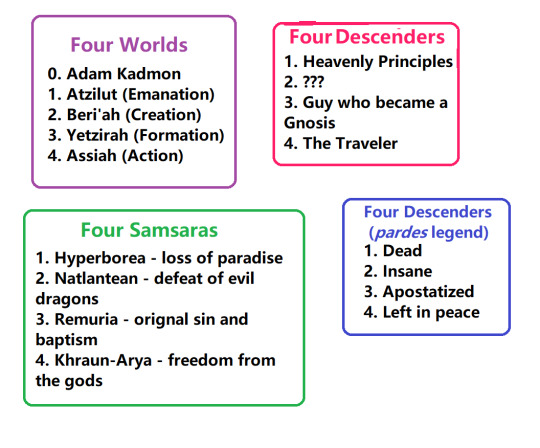
Keep all this information in mind, because before we can discuss the connections between samsaras, Descenders, and the Primordial Man, we must take a detour into alchemy and psychology.
Primordial God Impact
Genshin Impact has always been about the primordial - it’s literally in the name: 原神, or yuan shen, which means ‘original god.’ Many other in-game items share this descriptor, including primogems (原石), Primordial Seawater (原始胎海之水), and the Primordial One (原初的那一位). The same characters are also used in the note from the Tower of Ipsissimus when referring to the ‘primordial human’: 原初之人, which as it turns out, is exactly the same word used for the Primordial Human Project.
The Primordial Human Project has been mentioned exactly once, in a cutscene from the Shadows Amidst Snowstorms event in version 2.3. There, Albedo refered to his doppelganger who had been wreaking havoc on Dragonspine as the “failure of the Primordial Human Project.” Albedo implied that he is the “survivor” of an experiment associated with the Primordial Human Project and considers it to be related to his origins as a creation of Rhinedottir, aka the alchemist Gold.
We know very little about Rhinedottir and her motivations. She’s a practitioner of the Art of Khemia, a member of the Hexenzirkel, is labeled a sinner and blamed for the appearance of monsters during the Cataclysm, made a dragon named Durin and sent him to Teyvat during said Cataclysm, where he caused destruction everywhere he went while thinking he was playing, and might have also made Elynas, who had a similar fate. According to Skirk, she, like Skirk’s master, is “pursuing some form of perfection.”
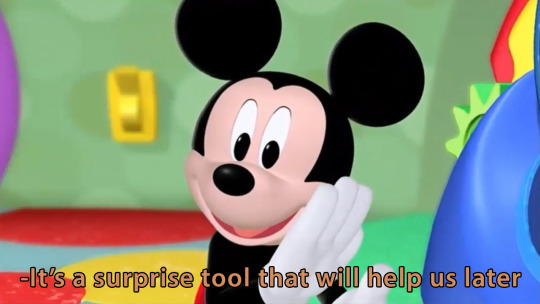
The Great Work
Rhinedottir’s alchemical research was focused on the creation of new life and she was familiar with an alchemical text called the Opus Magnum, which she left behind for Albedo to study. The Opus Magnum is a reference to the real life Magnum Opus, or Great Work, which refers to the alchemical process of creating the philosopher’s stone from the prima materia (original matter). The process typically goes as follows: nigredo (blackness), albedo (whiteness), citrinitas (yellowing) and rubedo (redness).
Later Western alchemy would merge the citrinitas and rubedo steps into just rubedo, or include additional steps, such as the peacock’s tail stage between nigredo and albedo. Notably, the order of the last two steps in this process is reversed in the version of the process Albedo learned from Rhinedottir: rubedo is third, with citrinitas last.
This reordering isn’t universal in Teyvat: Rene’s notes disparage this choice, saying that Khaenri’ah is distracted from the true goal of the process:
..."Red" is the foundational principle, the philosopher's stone*, while "yellow" represents gold and mortal temptation. Yellow is simply bait. Red is the final goal. However, Khaenri'ah would likely seek the truth for gold's sake before turning that truth into a bread production pipeline…
[*This is the first and so far, only, time the phrase “philosopher’s stone” has been directly mentioned in-game.]
Rene has a somewhat ironic take on the Khaenri’ahn alchemical philosophy, given that Albedo’s character stories specifically say “Khaenri'ah was an underground realm, with precious few natural fauna. As such, its alchemy focused more heavily on the creation of life.” Rene often has strong opinions - but why would he care about the order of the Magnum Opus?
The Chymical Wedding of Rene de Petrichor
A recurring motif of the Great Work is the ‘chemical wedding.’ This refers to a union of opposites; male and female, sun and moon, fire and water, sulfur (Red King) and mercury (White Queen), etc, and is often depicted as taking place in a fountain. Here, in this drawing from a copy of the Ripley Scroll, sulfur and mercury wed and form the androgynous (like the primordial man) ‘philosophical child,’ which is philosophical mercury.

Philosophical mercury is the underlying principle or “divine flow” that makes alchemy and transmutation possible. Therefore, the goal of the Great Work was to pin down this mercury into matter through the four (or more) stages of the Great Work and make the philosopher’s stone [7,8].

"The Stone that is Mercury, is cast upon the Earth, exalted on Mountains, resides in the Air, and is nourished in the Waters." (Michael Maier's Atalanta Fugiens. 1617.) The cubes represent prima materia. ;)
The chemical wedding is also used as a motif throughout the story of the Narzissenkreuz Ordo. The Book of Revealing includes a schematic of the “Seal of Chymical Marriage,” which consists of a “Tree of Emanation'' and the “Four Orthants,” and was used to seal the Primordial Sea. The Tree of Emanation component is, of course, a version of the Kabbalistic Tree of Life - for more ramblings, feel free to check out my twitter thread here.
The Narzissenkreuz Ordo is likely intended to be a reference to the real life Rosicrucian Order, and the name of the seal a reference to an important text for this order called the “Chymical Wedding of Christian Rosenkreutz.”
Other possible references to chemical weddings include Lyris being referred to as the ‘Red Empress,’ Rene using her power to dissolve himself and be reborn through the water, and Mary-Ann and Lyris fusing and eventually producing “pure water” aka Ann.
Actually, when you dig into it, there are many suspicious interactions between sun and moon-coded gods in Genshin lore, as well as the doomed wedding of the Seelie and the traveler from afar. My Name For Now made a really interesting video about this, so if you would like more information and speculation, check it out here.
The Philosopher’s Stone and the Self
The philosopher’s stone is the Holy Grail of alchemy: an alchemical substance that can transmute base metals into silver or gold, make someone immortal, cure all illness, make a homunculus, and more. The stone represents perfection and spiritual refinement, either of nature through alchemy, or of the self (the alchemist) [8].
Carl Jung, the founder of analytical psychology, considered the steps of the Magnum Opus to represent the process of the individuation of the self from the collective unconscious. The similarities between his interpretation of alchemical symbolism and the ideals of the Narzissenkreuz Ordo deserve their own separate analysis, but in brief: Jung defined the collective unconscious to be the shared unconscious mind between humans, full of basic instincts and archetypes, which are primordial symbols that exist in many mythologies throughout the world. Jung compared the collective unconscious to the alchemical symbolism of water, which he describes as “wisdom and knowledge, truth and spirit, and its source was in the inner man [9].”
The process of individuation separates aspects of the personality from the unconscious (the water) and then eventually integrates all components together, to form the individual self, which can now bring “order” to the unconscious (at least on a personal level)[10]. In other words, the Jungian interpretation of the Magnum Opus is that the final product, the philosopher's stone, is the Self.
If we apply this symbolism to Rene’s journey, it appears he was attempting to refine himself into a philosopher’s stone, which would explain why he was so interested in the work of the Khaenri’ahn alchemists. As he stated multiple times, his goal was to become a “primordial human,” whose will “can rival an entire world.”
Rene’s philosopher’s stone is a Descender.
The Primordial Human Project
After Rene’s failed attempt to dissolve himself in Primordial Water and be reborn using Lyris’s power, Jakob turned to his own research to try to save Rene and complete his rebirth. In his log of this time period, Jakob wrote:
...I've been interpreting the data in search of a solution and sharing the results with Rene. There has still been no response, but I can already envision his response with perfect clarity: criticizing the Universitas Magistrorum for putting the cart before the horse, neglecting the fundamental principles underlying everything, and diving straight into the details of how to put those techniques to use... How they inverted even the alchemical stages for other purposes…
...It seems that there was an alchemist from Khaenri'ah named "R" who joined a secret order. From what fragmentary records exist, it appears that they made significant headway.
There are two items of note here; the first is the mention of Universitas Magistrorum, which previously had only been mentioned in a namecard description.
The card description reads "O Almighty Sovereign, the Universitas Magistrorum has provided the predictions you requested: The two stars have been captured by the world's gravity…” which may be referencing Khaenri’ah’s summoning of the twins (Inversion of Genesis).
From the context of Jakob’s notes, we can infer that this organization was also utilizing some form of the Magnum Opus for an unknown purpose.
The second item of note is the mention of the alchemist “R,” who is almost definitely Rhinedottir, and the “significant headway” that she and this mysterious “secret order” made. It’s very likely that Jakob is interested in Rhinedottir’s work simply because he wants to make a new body for Rene; the log also mentions Remurian golems and experiments with prosthetic limbs. However, the mention of her and the Universitas Magistrorum in the same context, with Jakob’s commentary on the reversed order of the Magnum Opus, gave me the idea that sparked this whole theory (descent into madness):
Is it possible that Rhinedottir’s Primordial Human Project was intended to make a Descender?
Sometimes, very important lore gets buried in character stories. For example, the first time the term “primordial (hu)man” shows up - which is in Albedo’s fifth character story.
This art of creation was known as "The Art of Khemia."
Albedo had learned of this in his youth from reading his master's notes.
The next stage after "soil" is "chalk," which was also something his master had mentioned.
"Chalk is the spotless soil, and was used to make primordial man."
Now, Albedo understands alchemy in far greater depth than he did in the beginning, and his knowledge on the subject is far more comprehensive.
"From soil was birthed chalk."
The profundity of this statement is well understood by Albedo now.
Albedo is also the “chalk”; Rhinedottir gave him the title of Kreideprinz, or Chalk Prince. She seems to have a habit of naming her creations after types of soil. Durin was ‘humus,’ the Riftwolves are ‘alfisol,’ and Albedo is ‘cretaceus’. According to her, earth is “the basis of all life” and the “accumulated memories of time and lives,” so it makes sense she’d use soil as the starting material for her alchemical creations.
Albedo seems to be aware of the Traveler’s unique status, although he never names them as a Descender. During his Story Quest, Albedo studies the Traveler to get insight on how to help an alien flower bloom.
Albedo: The only other life form that, like you, has come here from afar, is the seed that I mentioned. Under the effects of Teyvat's natural laws, it isn't even able to sprout, let alone bloom.
Albedo: But after I observed you, I had another idea.
Albedo: Imitating you helped to inspire my alchemy, and so...
Albedo: Is not nurturing otherworldly life also nurturing the world itself?
Following the experiments he performs on them, he reveals to the player that he lied about some of their test results, and even compares himself to the Traveler.
Albedo: I made a point throughout of telling them how ordinary the results were...
Albedo: But what was that sediment I saw forming at the bottom of the vial? It should not have been there... What could it mean?
Albedo: Those born of earth are bound by its imperfections, but those born of chalk are free of impurities... You and I are alike, both composed of a substance that has yet to be fully defined...
This leaves us with questions. Assuming Albedo is similar to the ‘primordial human’, what is his role? Is he a Descender, or is he meant to work to become one eventually, like Rene tried to do?
Let’s return for a moment to the Primordial Man and Adam Kadmon. Earlier, we discussed the symbolism of Adam Kadmon; this being represents the divine will to create, also known as the “primordial thought,” as well as the Idea of humanity. Adam Kadmon is the potential for creation unified together, with no distinctions between any concepts. Hermeticism and alchemy have a similar concept, succinctly summed up in the phrase “the all is one,” which can be found written on one of the earlier alchemical drawings of an ouroboros by Cleopatra the Alchemist [11].

In Gnosticism and alchemy, this symbol refers to unity of all material and spiritual things, as well the eternal cycle of destruction and re-creation as things change form [12].
Rhinedottir shared this philosophy, as evidenced by the description for Cinnabar Spindle, Albedo’s sword.
Separate the dust in the flames with joy, and extract the exquisite from the crude.
For all in the universe comes from a single source, and all things may be derived from a single thought.
The weapon description also contains instructions for Albedo that likely tie into his expected role as a success of the Primordial Human Project.
You must pursue that which your elder brother, the one-horned white horse, could not accomplish.
Reach the far side of philosophy, and create a new destiny for myself and your brothers…
Albedo’s final assignment from Rhinedottir is to learn the “truth and the meaning of this world,” a phrase echoed by the Abyss Twin in We Will Be Reunited. Knowledge is literally power in Teyvat: both Nibelung the Dragon King and later, Deshret, utilized Forbidden Knowledge, also referred to as a “power of darkness from outside of this world”, believing it to be the only effective power to defeat the Heavenly Principles. In fact, it’s even possible that the Dragon King was one of the Descenders despite presumably being native to Teyvat. The process of acquiring the Forbidden Knowledge could have evolved him to true Descender status, although this power appears to be incompatible with Teyvat, especially in the wrong hands.
The power of the Forbidden Knowledge is similar to the metaphorical garden of the pardes myth, where out of four “descenders,” only one was able to safely leave, with the esoteric knowledge gained. The philosopher's stone also represents knowledge-it is the lapis philosophorum; literally the 'stone of wisdom'. Knowledge is also how one ascends in Gnosticism, i.e, achieving gnosis.
Perhaps this is the true method to create a Descender and Albedo’s future role: once he reaches the far side of philosophy (learns the truth and meaning of the world) and ‘evolves’ and ‘refines’ himself from albedo through rubedo and citrinitas to the philosopher’s stone, he can change destiny.
This sounds familiar…
Fortuna and Evolution
Rene’s calculations of the world-formula predicted that following the fulfillment of Fontaine’s prophecy, there would be no new civilizations formed from the ruins, as there presumably had been in the past following similar disasters. Rene believed the only way around this was for him to become a Descender, and save Fontaine from the disaster, beginning a new age. It’s implied in the text of the Book of Revealing (the version in the WQ) that the fulfillment of the prophecy would spell disaster for all of Teyvat, not just Fontaine, but even if that were not the intent of Celestia, we can use this example as an analogy for the world-formula of Teyvat.
Rene directly compared the world-formula to the Remurian concept of Fortuna:
Kingdoms rise and fall, and when a civilization is annihilated, a new one will be born after from the ashes, which these books refer to as "Fortuna"... It's somewhat rudimentary, but theoretically at least, it bears striking resemblance to the computational scheme I have formulated and termed "world-formula"...
Let’s spin the wheel of Fortuna and return to the beginning, where we first discussed the four samsara cycles of spiritual evolution and the Four Worlds. Although the samsara cycles don’t refer directly to actual historical events, their names are based on ancient texts. It’s not a large leap in logic to suggest that each of the four samsaras refers to eras in Teyvat’s history- what others in the lore community have been referring to as ‘root-cycles.’ For example, the defeat of evil dragons associated with the Natlantean samsara could refer to the war between the Primordial One and the vishaps described in Before Sun and Moon, or the war between the Heavenly Principles and the Dragon King (which might be the same thing!). The events associated with each samsara must be what ends the samsara, since the fourth, Khraun-Arya, is the current, and represents freedom from the gods, which has not happened yet.
Given that the Descenders can (theoretically) change the result of the world-formula/Fortuna, it can’t be a coincidence that there are the same number of Descenders as there are known samsaras. In addition, if the four samsaras of Teyvat function like the Four Worlds of Kabbalah, that means that a samsara-ending event would be something that results in the evolution of the world. Apep says that during the war between the Dragon King and the Heavenly Principles, Teyvat was in danger of collapsing, and that the victor of the war would “inherit the right to shape the world”. This sounds a lot like Rene’s definition of a Descender: one that can protect the world, sustain the world, destroy the world, and create the world.
The death and disassembly of the Third Descender led to a significant change in the “order” of Teyvat when the Gnoses were created to replace the “ruined” functions of the Heavenly Principles. Put another way, Descenders are able to evolve Teyvat into its next stage of evolution.

The fate of the Third Descender and ruined functions of the Heavenly Principles suggest another, alarming component to the relationship between samsaras and Descenders. It could be that as part of the process, a Descender must replace or repair an aspect of the mechanisms that maintain Teyvat. Don’t worry about the Traveler though; the fourth descender of the pardes legend gets to leave the garden in peace.
On the other hand, the first Descender in the legend is the one who dies, and in Genshin it’s the third, so maybe the list isn’t exactly in order. Of course, this comparison to the legend is partly a joke, but it is very interesting that the metaphor for apostatizing is uprooting trees….
Khaenri’ah’s World-Formula
We know from Rene’s notes that Khaenri’ah had their own version of a world-formula, or at least, their records contained information Rene could use to reverse engineer their predictions. We don’t actually know what he found there, but based on the name he gave the fourth samsara and the whole “freedom from the gods” thing, it seems they were trying to evolve Teyvat into the next samsara and make this freedom a reality. We also know that the Khaenri’ahns were searching for a specific kind of power, a power they referred to as both a “perpetual” energy source and a “secret from beyond the skies” that could “throw off the shackles imposed by this world's laws.” This power from “beyond the skies” is thought to be some form of Abyssal power, and the Khaenri’ahns who used it seem aware of a will contained in that power, a “dogma from beyond the heavens.” In fact, it’s possible that this power is the same as the Forbidden Knowledge brought in by Nibelung, which also had an influence on Apep’s behavior when they were infected with it after eating Deshret.
It appears that Khaenri’ah was familiar with something similar to the concept of a Descender, which makes Chlothar’s words to the Traveler in Caribert all the more impactful.
Chlothar: I never imagined that you, of all people, would deny the Abyss... How ridiculous!
Chlothar: We once believed that you would bring new strength and hope to Khaenri'ah.
Chlothar: To us, you were the Abyss... A wondrous mystery far beyond our imagination and comprehension...
Chlothar: ...And the one who controls the Abyss can control everything!
Chlothar: We yearned for that future. We looked to you to take us there.
The Future
As mentioned previously, the Four Worlds of Kabbalah are all precursors to the actual material reality, which will be emanated (created) from the fourth world. Luria believed that our world was not yet completely realized and needed another spiritual push from humanity to be actualized. (The mechanics of this won’t be discussed here - so consider this a teaser for Part 3 of Kabbalah theory.) Therefore in Kabbalistic terms, this fifth samara, this fifth world, would be the final and true reality for Teyvat.
This would be why Khaenri’ah needed a Descender or even merely a power that could defy the Heavenly Principles. That was why they summoned the twins, and why projects like the Primordial Human Project existed. It’s ironic that in their desire to remake the world in the image of their dreams, where they were free from the gods and the Heavenly Principles, they chose in the end to bind themselves to a will from beyond the sky, which ended up in catastrophe.
As the letter in the Khaenri’ahn ruins of Gavireh Lajavard says: “The gods are untrustworthy and the demons, ineffable. If there is one thing that can pry open the corners of this hollow world, then it can only be human will.”
Congrats on making it to the end! As you can see, this was already reaching a ridiculous word count, so there were some things I had to leave out, or only briefly touch on. So here are some people and concepts I pretended didn't exist so this didn't get (more) convoluted, but you should read about them:
Crowley and True Will, Nietzsche and the overman, Zoroastrianism as a whole, but particularly their version of the Primordial Man, William Blake's prophecies (his Auguries of Innocence is a big inspiration for the artifact lore), Schopenhauer and Will, Atman and Brahman, Plato's concept of the world-soul, SWORDS (in Genshin lore), the Holy Grail legend, and shoutout to Otto Apocalypse the real First Descender.
I do want to point out that some of the (real) people on this list, like Crowley, either were terrible people who believed terrible things, or had their philosophy used for terrible things. This also applies to other inspirations for the Narzissenkreuz Ordo. Please keep that in mind when engaging with these people's work.
On a lighter note:
Sabre’s Fun Fact Science Corner aka Miscellaneous Stuff I Need to Put Somewhere
I didn't want to have to get into explaining the lore of another piece of media but yes, this theory was inspired by a binge watch of the last arc of Fullmetal Alchemist: Brotherhood, transmutation circles and philosopher’s stone and all
On the topic of FMAB, the The Black Serpent Knights archive description states: “The long years and a curse seems to have robbed them of their reason and memory. Now, all that remains within that armor is the will to ‘fight for something, someone, and some matter.’” Funnily enough, the subtitle of the Knights is ‘Aldric’ - Alphonse Elric, anyone?
Caribert becomes the Loom of Fate to “weave his own destiny anew”, Albedo has the Cinnabar Spindle and instructions to create a new destiny - I’m sensing a theme here
Rene believed that getting a Vision was a bad thing in the process of actualizing your Will, and resulted in you selling your fate to the world. So he developed a ritual to remove a Vision from an allogene (this is only mentioned in passing by Caterpillar). So even though Albedo has a Vision, he’s not out of the running to become a Descender. But also Rene was wrong about stuff so ¯\_(ツ)_/¯
The anthropomorphic imagery in Lurianic Kabbalah can get pretty bizarre, but in a fun way if you're into Genshin lore. Adam Kadmon is described as emanating divine light out of his face, specifically his eyes, to create the next world. Genshin eyeball lore is my roman empire.
As a full elemental dragon, Apep had a “world” inside their body. Rhinedottir seems to like dragons a lot; I wonder if she considers them to be similar to the primordial human. Also, there's evidence that the Traveler's elemental abilities mimic those of the elemental dragons, rather than the archons.
References:
Toseftah Hagigah 2:2 Babylonian Talmud Hagigah 14b, Jerusalem Talmud Hagigah 9:1.
Introduction to Kabbalah and Jewish Mysticism - Part 3/14 - Merkabah Shi'ur Komah & Sar Torah
Introduction to Kabbalah and Jewish Mysticism - Part 10/14 - Christian and Lurianic Kabbalah
https://www.jewishencyclopedia.com/articles/761-adam-kadmon#anchor10
https://www.jewishvirtuallibrary.org/adam-kadmon
https://www.chabad.org/kabbalah/article_cdo/aid/380321/jewish/Chaos-and-the-Primordial.htm
https://dpul.princeton.edu/alchemy/feature/the-chemical-wedding
https://www.scribd.com/doc/11441835/The-Four-Stages-of-Alchemical-Work
Jung, Collected Works vol. 14 (1970), Mysterium Coniunctionis (1956), ¶372 (p. 278) via Wikipedia
https://en.wikipedia.org/wiki/Analytical_psychology#Individuation
https://en.wikipedia.org/wiki/Chrysopoeia
https://www.britannica.com/topic/Ouroboros
https://www.gla.ac.uk/myglasgow/library/files/special/exhibns/month/april2009.html
https://alchemywebsite.com/rosary0.html
https://www.alchemywebsite.com/rscroll.html
#geshin impact#genshin lore#albedo#narzissenkreuz ordo#rene is my poor little meow meow#tfw you write a 6000 word theory because you miss albedo so much
158 notes
·
View notes
Text
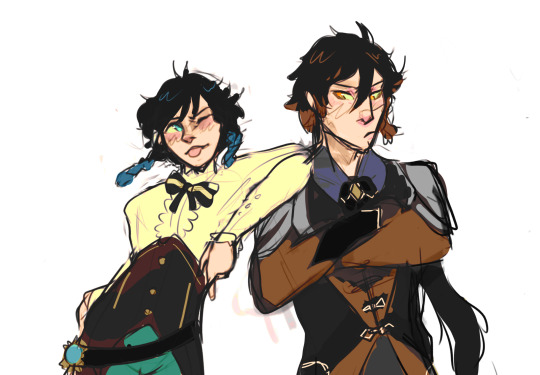
the grandpas!
art for my video talking about natlan and samsaras
#poli's art#genshin impact#genshin#zhongven#venti#zhongli#barbatos#rex lapis#morax#natlan#genshin theory#genshin lore#fontaine#mondstadt#liyue#SORRY FOR ALL THE TAGS LOVE U
312 notes
·
View notes
Text
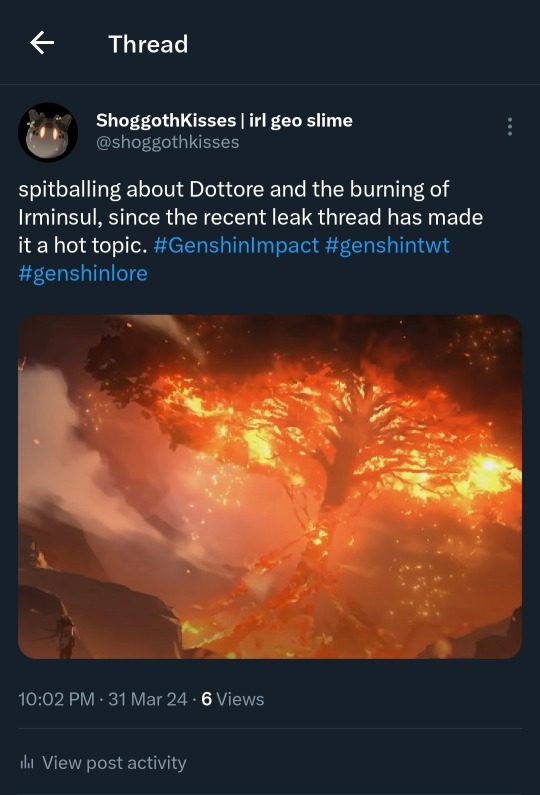


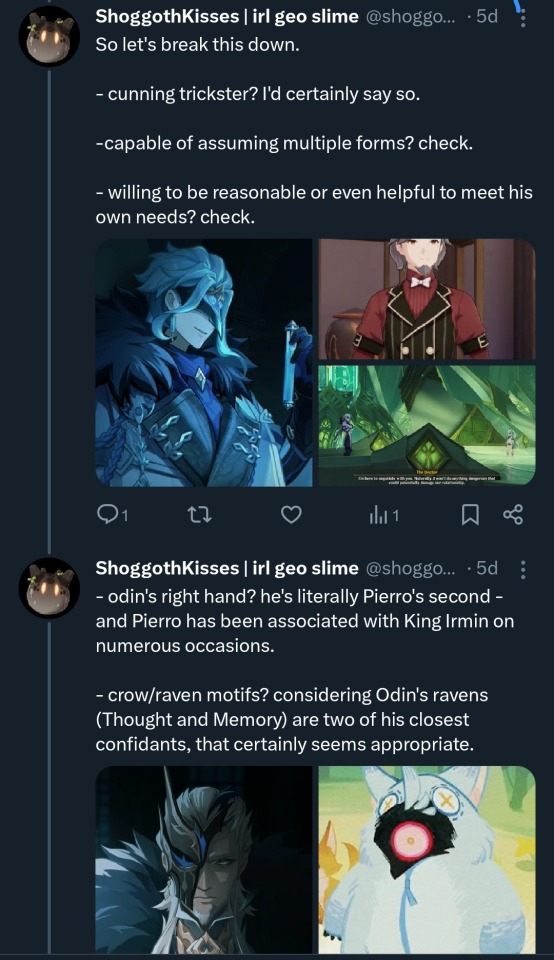


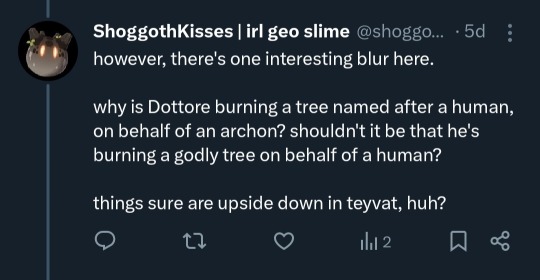
this flopped on the former bird app but maybe people will be more interested in my take here
126 notes
·
View notes
Text

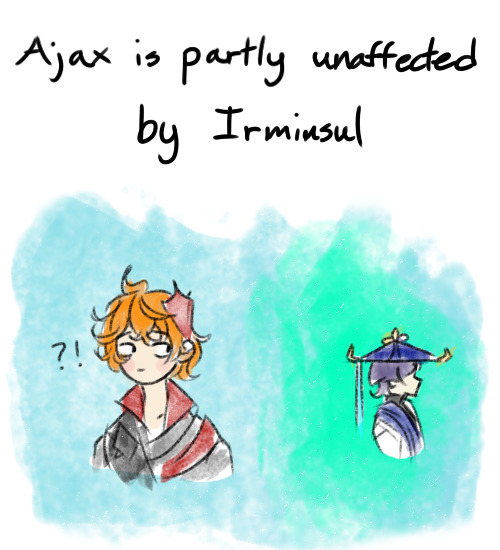
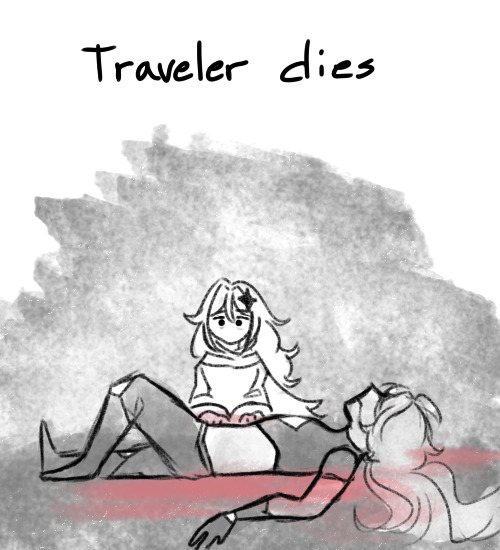
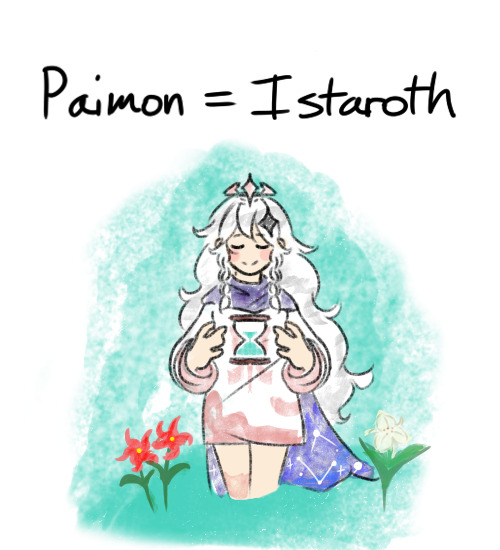
in a genshin lore mood rn so I drew some of my favorite theories/predictions
explanations:
Teyvat is Upside-Down: From what I know, it's basically the idea that the stars are fake because the Abyss is above Teyvat, not the real sky. I've also seen someone say that Celestia is Hell because it's down below if this theory is true, but I'm not sure how many people think that.
Ajax is Partly Unaffected by Irminsul: Due to spending time in the Abyss (outside Teyvat) and being completely changed by it, Childe is probably at least a bit resistant to having his mind altered by the Ley Lines, which affect everyone else in the world entirely. Of course, we see that it did affect him after the 3.3 quest, but Irminsul is likely gonna pop up as a plot point again, so who knows. I'm not sure how widespread this one is because I've only seen it in Chiscara fics/art and one (1) discord thread, but I like it so ehhh
Traveler Dies: Less of a theory and more of an angsty "what if?" scenario. It's silly, obviously the MC themself isn't gonna die. HOWEVER their sibling might.......or they both live in the end, but Traveler gets another major injury or presumed death scene. I personally think that the twin will die fighting either us or Celestia if hyv decides to make them not playable.
Paimon = Istaroth: That one huge theory about Paimon being the Unknown God but its a different lady now. Istaroth is the god of wind and time, and is possibly one of the Primordial One's shades. She used to be worshiped in Mondstadt and Enkanomiya before being eventually forgotten. People made the connection between her and Paimon because:
1. We control time with the Paimon menu,
2. Traveler fished up Paimon near the nameless island, which is Istaroth's temple,
3. In the 3.4 Lantern Rite epilogue, Venti (who's connected to Istaroth) barged in saying "Seeds of story, brought by the wind…", and Paimon finished his sentence, "…and cultivated by time". Venti's part is the name of achievement we got from going to the sundial island, and there's the wind and time theme again. Paimon herself was surprised that she said that without thinking, so it's safe to assume that it was a subconscious response that's been ingrained in her head for a while.
#genshin impact#genshin lore#this is like 50% based off discussions from discord/youtube#and 50% self indulgent copium thoughts#tartaglia#childe#scaramouche#venti#paimon#aether#my art#duckydraws#babys first time using the watercolor brush btw
132 notes
·
View notes
Text
Small spoilers for Fontaine Archon quest/4.2 update
///
Looking back, outside of maybe Venti, all of the Archons have been « freed » during the Quests: Zhongli is free from his duty, Ei is free from her self-imposed eternity, Nahida is literally free from her prison (and more metaphorically her self-doubt), and Furina is free from her « godhood » (or her performance however you want to see it).
I am not sure what Venti could be free from but being the embodiment of freedom i do believe his relationship with everything that happened is much more complexe than presented.
There is two main things that created and reflect that freedom: meeting Traveller and losing the Gnosis. I have a feeling that they are free because by giving away the Gnosis (for most) they are freeing themselves from the Heavenly Principles.
Actually Venti is the only one where the Gnosis was taken by force (i do think he allowed for it to be stolen). I don’t know what this means but if someone has ideas i’d love to hear them.
201 notes
·
View notes
Text
when I played Caribert, I was pretty disappointed about the lack of impact Dain seemed to have on Kaeya, honestly. during Kaeya's hangout, he didn't mention the weird cryptic blond dude who just dropped family lore once, which I thought would have been pretty important?
but in truth, I think Dain actually had a HUGE impact on Kaeya.
we can all know that from Kaeya's personal lore and former events that Kaeya had very conflicted feelings over his duty to Khaenri'ah and his love for Mondstadt, even with his estranged relationship with Diluc (which now seems partly fixed?), but in the performance route of Kaeya's hangout, Kaeya makes his choice.
The story of Prince Qubad is a very, very thinly veiled metaphor for Khaenri'ah all throughout, and then we finally get to the end scene of the play:
Kaeya: When I departed my beloved home to fight in a foreign land, I did so to honor his (my father's) wishes and for my duty to our people.
Kaeya: alas, is this fate's grand design… that I should spend the rest of my days in a foreign land, till I am laid to rest in a grave far from home?
K: Must it be so…?
K: my dear audience, I ask you this: do you believe in fate? if fate decreed that your life was to end in tragedy, what would you do?
Traveler: I would challenge my fate, and rise above it. / I would bravely face my fate.
K: then so must it be! I shall discard this intaglio, and rid myself of the shackles of fate.
G: my dear prince, do you intend to betray your father, and abandon your heritage?
K: fate means to send the machinations of war to every corner of the land, to fan the flames of conflict til they engulf the entire world…
K: fate would see my sword tainted with the blood of innocents, that the bright banner of my homeland might fly in every nation known to mankind.
K: but I shall not bow to the will of fate. I am no pawn in heaven's plan.
K: I, Kaeya Qubad, will spend the rest of my days in a foreign land, til I breathe my last in a place far from home.
K: but I must walk this path, or freedom dies by my hand. goodbye, my tribe and kin. farewell, sweet land of my birth.
after a lifetime of questioning his role, Kaeya makes his choice for Mondstadt. and I think this happening after meeting Dain isn't a coincidence. (and no, not in a soulmate way or shipping way- this is Kaeya's moment of choice, not infatuation.)
after not only learning the history of his origins, Kaeya meets a Khaenri'ahn who... doesn't want to return Khaenri'ah to its glory days? who is more focused on helping others and minimizing damage than causing more for his own gain? who chose his path and has not budged since, even through loss?
Kaeya gets to see someone who is so Khaenri'ahn, so human at his core, someone who cares not for the fate and tragedy of their nation. Kaeya gets to meet someone from his homeland who tells him to leave it all behind, who tells him he should take the chance he has been given at his own life; who actively discourages the idea of Kaeya being a fated "prince" or being indebted to Khaenri'ah.
even though he never said it, I think meeting Dainsleif helped Kaeya choose his own path, which is all Dain ever truly asked of him, anyway.
good for Kaeya.
(i understand that i used "ship" tags but those are more for visibility and duo name than anything else. idm if you ship them, i just request that your tags do not turn my analysis post into a ship post, pls! :)
#kaeya#kaeya alberich#kaeya ragnvindr#genshin kaeya#genshin impact#dainsleif#genshin dainsleif#genshin lore#genshin analysis#dainkae#kaedain#i guess#that tag is mostly for visibility#caribert#caribert archon quest
414 notes
·
View notes
Text
I was looking a bit more in Furina’s character and
THIS POOR GIRL WHAT
She seems mentally like a teenager who is forced to act like an adult, despite not having that maturity and being forced into this leader position after Egeria died, and was promptly almost immediately abandoned by her old subordinates (Oceanids).
Not to mention her own insecurities run so deep that she constantly has to put on an act for people to like and respect her, but by doing this the people only see her as a jester so the don’t take her seriously at all, even if she wants people too. Her need for validation from her people is digging her even deeper into a hole where she continues to lose seriousness by acting in what she sees is the only way to get people to respect her.
Aside from that, she feels practically isolated from her entire country. Her judge, Neuvillette, is taken very seriously by the people and garners lots of respect, which probably leads to Furina being jealous of him. Neuvillette looks out for Furina, but has little understanding of human emotion which makes it even harder for Furina to actually talk to someone.
On top of that, when she gets attacked and nearly murdered by Arlechinno, she literally can’t tell anyone about it. Her own self doubt and insecurities make her feel isolated and embarrassed that she even was in danger in the first place. She essentially seems to blame herself for it. NOT TO MENTION that there are fatui informants INSIDE Palais Mermonia, watching and recording her every move.
This girl has absolutely no privacy, and is always being watched and despite this, is still so incredibly isolated and lonely.
She is also being accused of being ignorant and useless in leading her country in the dilemma. As of writing this, it does seem that she genuinely has a plan. Imagine being yelled at for not helping your country by the very person who almost murdered you in the middle of the night despite trying your best to help. And this is all not to mention the whole split personality theory.
Overall, I find her character incredibly tragic and misunderstood. For the archon of a region that has a heavy motif of lying, masks, and deception, I find it ironic that most of the Genshin community has taken Furina at face value.
tl;dr: Furina is just a really lonely mentally unstable teenager
#genshin impact#furina#focalors#neuvillette#character analysis#genshin lore#genshin characters#genshin spoilers#genshin furina
221 notes
·
View notes
Text
"Oh Scaramouche should be electro, not anemo! Why would they do that?"
Y'all aren't understanding the symbolism behind it. Electro has been correlated with him through the entirety of him being a puppet. Through Ei, and through the Fatui. Electro has been with him when he has been lost, abandoned, and since he's been a puppet.
With anemo, related to the GOD OF FREEDOM, it's showing that he is now free from the clutches of being a puppet. He's now his own person on his way to create his own path, not one forged by a power hungry military powerhouse. He's free now, no longer chained to the ones that used him.
#sweethoneyfruit talks#scaramouche x reader#genshin men x reader#genshin impact 3.1#genshin impact 3.2#genshin lore#genshin impact theory#genshin impact lore
1K notes
·
View notes
Text
Something tells me the hydro gnosis is in the oratrice - that thing is suspicious
#genshin impact#genshin spoilers#genshin headcanons#genshin arlecchino#genshin neuvillette#genshin furina#genshin archon quest spoilers#genshin wriothesley#genshin clorinde#hydro gnosis#fatui harbingers#genshin crack#genshin imagines#genshin x reader#genshin freminet#genshin lyney#genshin lore#genshin smut#gensuin angst
198 notes
·
View notes
Text
Gross oversimplification of how Furina & Focalors split works
The hydro archon - Furina + Focalors, one being
Furina, separated - body and spirit of the hydro archon
Focalors, separated - divinity of the hydro archon
Now, imagine that you’re Furina, while Focalors is some aspect of yourself - like your ability to play the piano. This aspect breaks away from you, taking all the memories connected to it - you learning how to play, people you knew in music school, crying over homework, everything. After that, it becomes a formless entity that haunts a piano in your living room, and plays it from the inside, directly on the strings.
Despite this entity being separate, it’s still you, because it’s you that learned the piano, it’s your skills, memories, emotions. This aspect of yourself is incomplete without the rest of you, and you’re incomplete with a chunk of your life missing, but it’s okay because you can still move on without knowing how to play the piano.
Genshin goes out of its way to state that Furina and Focalors are one in the same several times. Focalors is not a clone, sister, mother - she doesn’t even have a body. Focalors is Furina’s allegorical ability to play the piano, she’s the act of “Furina being a god” itself.
#it’s also kinda funny that the original name from ars goetia is focalor not focalors#it may be a coincidence but what if it’s a reference to her splitting into two?#like Focalors - body and spirit + divinity#Furina - body and spirit#Focalor - divinity#anyway#genshin impact#furina#focalors#was fighting for my life on twitter today and got brainrotted into this comparison#hopefully this does make things a bit easier to understand#genshin theory#it's not a theory but i think the tag is useful#genshin lore
176 notes
·
View notes